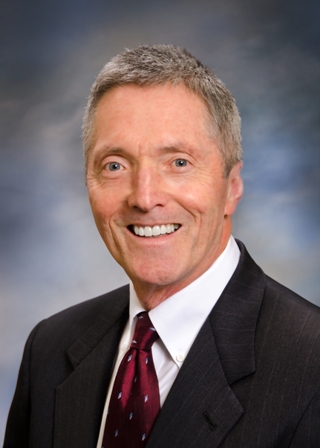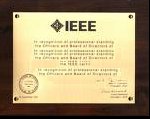
Carter M. Armstrong is the Vice President of Engineering at the Electron Devices Division of L-3 Communications. He received his undergraduate degree in physics at Rutgers University and his PhD in nonneutral plasma physics at the University of Maryland. After a post-doc in the laser-plasma group at the Naval Research Laboratory (NRL) studying hot electron generation in laser-produced plasmas, Carter joined the physics faculty at North Carolina State University where he studied nonneutral plasma stability, relativistic electron beam propagation and collective ion acceleration. Upon returning to NRL as Head of the Fast Wave Devices Section, Carter led exploratory research and development on novel fast-wave coherent radiation sources, including gyro-TWTs and gyro-klystrons, harmonic gyropeniotrons, and ubitrons. It was during this period that Carter rediscovered the vacuum device roots of nonneutral plasmas and became a “tube guy” – or at least a fast-wave devices guy. It would be later while working in industry, first at the Northrop Defensive Systems Division (now Northrop Grumman) then later at Litton Electron Devices (now L-3 Communications), that the fun and challenge of working on slow-wave devices – TWTs (both hot and cold cathode variants), klystrons and microwave power modules (MPMs) – would commandeer his career.
Carter first became involved with the MPM – an ultra-high power density RF amplifier marrying solid state, vacuum electronics and power electronics technologies – at Northrop, where he oversaw the development of high efficiency and wideband vacuum power booster TWTs. His involvement with MPM technology only increased with his subsequent move to L-3 Electron Devices, where he has led the successful extension of the approach into the millimeter wave regime.
It was at L-3 Electron Devices that Carter established an engineering intern program to bring in the next generation of vacuum electronics, mechanical design, and power electronics engineers. Working closely with the vacuum electronics research programs at the University of Michigan, Ann Arbor and the University of Wisconsin-Madison the intern program at L-3 has been nothing less than an outstanding success, serving to usher a new generation of bright and energetic engineers into the field.
Carter has served on numerous government advisory committees, including the DoD Advisory Group on Electron Devices (AGED). It was while on AGED that Carter co-chaired a review on compact THz sources. He published a feature article on the technical pursuit in the 2012 September issue of IEEE Spectrum, entitled “The Truth about THz.” The paper was selected as a finalist in the technology area for the 2013 Jesse H. Neal National Business Journalism Award.
Carter has been an adjunct professor in the ECE Department at the University of Wisconsin-Madison since 1996. He was elected a Fellow of the IEEE in 2013.
John R. Pierce Award for Excellence in Vacuum Electronics 2013
For leadership and technical innovations in the field of vacuum electronics and for tirelessly fostering relationships between industry, academia and government.


